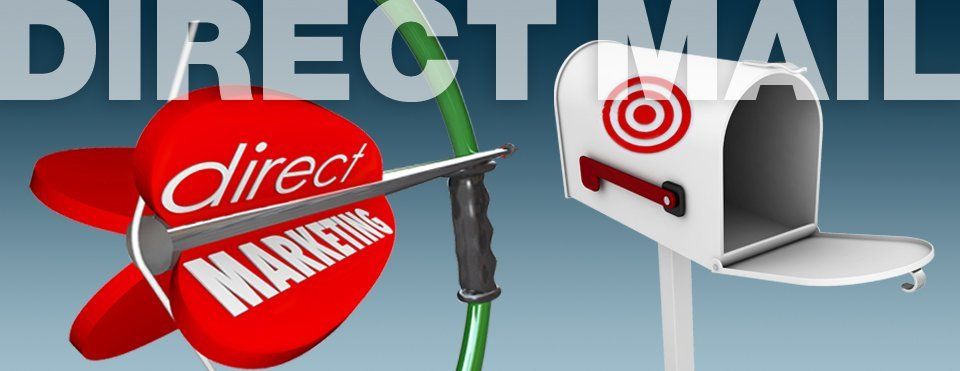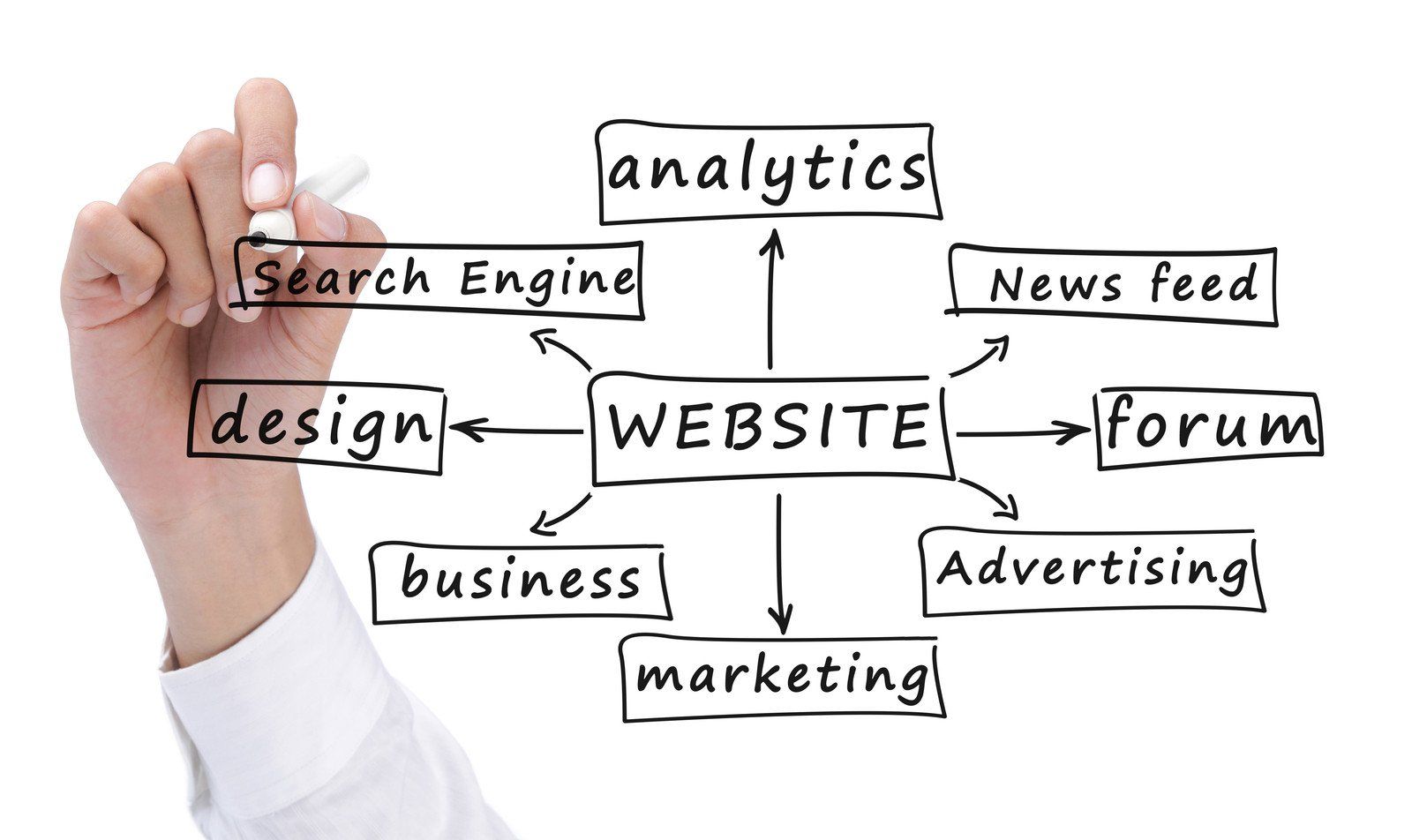BLOG

Marketers continue to use direct mail in 2017 because it still leads in ROI. However, traditional direct mail marketing has changed dramatically. InfoTrends did a study on direct mail that found the following statistics: 66% of direct mail is opened, 82% of direct mail is read for a minute or more, 56% of consumers who responded to direct mail went online or visited the physical store, 62% of consumers who responded to direct mail in the past three months made a purchase, and over 84% reported that personalization made them more likely to open a direct mail piece.
Today, everyone knows that SEO, PPC, social media and all other forms of digital marketing are proven methods for obtaining new customers and retaining existing ones. Using them is simply smart marketing.
These new marketing channels work, for sure. But that’s not to say you should take your WiFi and social networks and ride off into the sunset. Doing so just might cause you to miss out on a major portion of the market, and overlook a potentially powerful way to connect with new and existing customers.
Direct marketing, my friends, still works. Here’s an argument for why you should still carve out time and resources for direct marketing campaigns in 2017.
1. Direct mail is a terrific way to intertwine various marketing channels to provide a seamless customer experience. In fact, 40 percent of marketers identify direct mail as the ultimate “omnichannel team player.” Put simply, direct mail seems to play well with others.
2. Any good marketer is concerned with the response rates of their marketing campaigns. Direct mail continues to outperform other channels, with a 2016 response rate of 5.3 percent to house lists (2.9 to prospects). Meanwhile, digital channels often can’t climb above 1 percent.
3. Unlike an email that can stay unopened indefinitely, most people eventually open their mail. One third of Americans in a 2016 InfoTrends study claimed to read their mail, which was significantly higher than those who read their emails. Another third of the group, reported reading both mail and email at the same rates.
4. Although it might blow your mind to imagine someone not as addicted to Instagram or YouTube as the rest of us are, such humans do exist. A 2016 study by the Pew Research Center showed that 13 percent of Americans don’t go online, at all. This means your direct marketing campaign is in a prime position to reach this group like no other channel can.
5. Marketing today succeeds when the brand makes an impact on the customer. Direct mail leads the game in this because customers read it longer and develop brand recognition much easier. In fact, when direct mail is combined with email, ROI increases by 425 percent as opposed to using email alone.
6. Lots of marketers think the only way to connect with millennials is through digital channels. Apparently, this is not true. Millennials actually get a kick out of receiving physical mail. A quarter of millennials view the process of sorting mail as a “leisure activity.”
7. Furthermore, recent studies reveal that a large percent of Americans are feeling the negative effects of being constantly plugged in. Forty-three percent of respondents under 30 and 52 over 65 endorsed shutting off their smartphones because they were too distracting. This antipathy about being connected may not bode well for digital channels.
There you have it, folks: statistical proof that direct-mail marketing still has a seat at the table. This form of marketing is extremely viable for increasing ROI, reaching millennials and non-internet users, and offering highly competitive responses rates.
For more information about help with your own direct-mail marketing campaign, contact ATS Marketing Services.

If your company has decided to establish is presence on social media, the next step is how is it done?
A social media strategy for your company needs to be developed. Sure, your business has a Facebook and Twitter account that it occasionally posts on with an interesting industry article or to get the word out about a promotion, but that’s about the extent of it.
You hear how your company needs to be present on social media, but you aren’t seeing the results that are everyone keeps claiming are yours for the taking.
Effectively posting on social media requires a well-thought-out strategy that must be continually tweaked and re-implemented. The occasional posting about company news or promotions will no longer cut it.
How do you start a social media strategy? There are so many social media channels out there, which ones should you post on? What kind of content should you post to get the most engagement? Should you pay to promote your posts? Do you know where to look to see how well everything is performing?
Before you get overwhelmed, here is a guide to get you started on the right path of a successful social media strategy for your business:
Step 1: Set Goals and Objectives
Before you start a campaign in any business, you need to have goals and objectives in place to assess progress and know whether you’ve achieved success. A social media strategy is no different. If you don’t have any goals or objectives written out, you won’t know how your campaign is performing. These provide the foundation of your blueprint for your strategy.
Every subsequent course of action within the strategy is aimed at meeting or exceeding these goals and objectives.
With goals and objectives, you can quickly see when and where your social media campaign is going awry and make immediate changes to put it back on course.
When creating goals and objectives, it the S.M.A.R.T method is a good starting point. According to this method, the goals and objectives are to be specific (S), measurable (M), attainable (A), relevant (R) and time-bound (T).
Step 2: Do a Social Media Self-Audit
After creating the goals and objectives for your campaign, you should look at where your current strategy stands.
What social media platforms is your company currently posting on? What kind of material is being posted? How much or little engagement is there? When do you post? How often do you post?
It helps to create a spreadsheet to document your answers to the above questions. Use this spreadsheet and compare it against your strategy’s goals and objectives. Are there things you’re already doing well? What needs changing in order for your goals and objective need to be met?
Besides looking at the health of your current social media channels, be sure to completely fill out your company’s social media profiles, with a clear, identifiable picture and keywords. Completed social media profiles make your brand easier to find by consumers and it adds to your brand’s credibility and authority.
Step 3: Research
Maybe your company is posting on the wrong social media channels, or posting the wrong type of content, or is currently not on another social network it could leverage for increased attention. Maybe your posts are going out at the wrong time.
It can be tempting to be on as many social media networks as possible. The downside of this is that you will wear yourself out, waste valuable time, and produce hurried, boring, bulk postings.
You need to do some research on your industry, your desired audience, and even your competitors. Where are your ideal audience members most active? When are they most likely to engage? What interests them and what messaging catches their attention?
There are multiple social networks that allow you to gain insights into these questions. Facebook, for example allows users to target specific audiences, see the interactions on their posts, the best and worst time for post engagement as well as demographics of those that interact with the posts.
In terms of scheduling posts, there are automation tools such as Buffer and Hootsuite that allow you to synch and schedule posts on multiple social networks in one place.
Observing what your competitors are doing and how well they’re faring on social media can give you tips and tricks on what to try out and what to avoid when formulating and implementing your social media campaign.
Step 4: Create Quality Content
You can be on every social media network and still not get the engagement and conversions you’re looking for because your content is bland, salesy, useless and impersonal.
You won’t know what to write without first identifying your ideal audience and social media networks. When coming up with content, you want to not only catch people’s attention, but you want to make your brand stand out as an authoritative and trustworthy source of information in your industry.
As you do this, it’s important to design your content to take advantage of each individual platform. Twitter, for instance, only allows for 140 characters and utilizes hashtags. Instagram, and Pinterest utilize images. Facebook utilizes text, images and videos. YouTube utilizes videos.
Your content needs to match the format of the platform, be interesting, and be useful. It should not come off as impersonal or condescending. Have your content make your brand appear as a person, not an organization.
Like putting together a social media audit spreadsheet, and using scheduling tools for posts, creating an editorial calendar can help guide you as to what you write. With an editorial calendar, you’ll know what you’re going to write about and have details
Step 5: Continued Assessment
Once you research your audience, craft your content and schedule the posts on the appropriate social networks, you may be tempted to sit back and relax.
If you put a lot of time, resources and energy into a social media strategy, you want to make sure the ROI is worth it. Otherwise you’ll remain stuck and stagnant in your efforts.
Nobody wants to stay stuck and not grow.
As with any aspects of internet marketing, things in social media change constantly.
If you post a Facebook post at 2 pm one week and get a lot of engagement can turn into an ignored post the next week. Consumers also get bored seeing the same content all the time.
Social media strategies require time and a plan.
Just doing the occasional posting on a few social media channels will not result in a successful social strategy.
A well-performing social strategy begins with goals and objectives. You need to see where your current strategy is, research the best social media channels and your target customers and create high-quality, useful and interesting content.
Is it time to start a new social campaign? Contact us when you would like to get started....we'll get your business off in the right direction!

The world of marketing is diverse and confusing. So you think that don’t need online marketing at all. You don’t have the budget and you certainly don’t have the time. After all you’re a small business or a local mom and pop store. You can thrive on walk-in customers, the occasional leaflets and business cards that you hand out or work some more on connecting with your friends and their friends on social media .That should do the job.
Wrong.
Online marketing is important for business success and personal success!
Even if you’re a small business owner or a brick and mortar business, you cannot ignore having an online presence and a good marketing strategy. Everyone and everything is going digital and most of your customers are online even if you’re not.
Online marketing gives you the opportunity to tap into the huge database of potential customers. And that means increased profits and more business.
But you don’t have money to waste and time is precious?
Fret not.
It doesn’t have to be an elaborate 100 page marketing plan nor do you have to spend all your hard earned bucks on online marketing. But you can market smarter with these 6 proven tips that will bring you success in all your marketing efforts.
1. CREATE AN ONLINE PRESENCE.
Every single business is online and you need to be there too even if you only sell to offline customers.
Don’t you want to grow your business and capture new customers?
I thought so.
With over 1 billion Facebook subscribers and 5 billion Google searches every day , surely there has to be some potential customers in there for you.
Besides, consumers shop differently these days. They want to be informed and gain knowledge about which products and services are good for them before they even commit to buying anything. And they do this by searching online. You’ve probably done that too.
It’s not so much about selling your products online (you don’t have to sell everything online) but about making your presence felt and leveraging the World Wide Web and the potential it presents to expand into new markets, verify your business and increase your visibility.
According to a survey , only 54% of small businesses in the U.S have a website.
That’s nearly half the businesses that are not using the potential an online presence offers to reap the many benefits that are available to them.
By having online presence, you are reminding your customers about your business, your value to them and how you can best serve them. Your web presence is the first point of contact for any potential customers and as first impressions go, it should be memorable- the kind which makes them comes back for more.
A simple website should do the trick. You don’t have to build a full-fledged e-commerce website. But put in enough thought to plan a website which is designed to inform, engage, and convert your visitors. By doing this you stop being invisible ! So get started by finding a good consultant who can set up your business presence online.
2. GO SOCIAL
If you don’t have a social media account, its time you got one. Close to 1.7 billion users have active social media accounts and there are1.65 billion active mobile social media accounts . These are huge numbers and in there lies the potential for you for grow your business, attract new visitors and increase conversions.
Social media platforms are excellent lead generation tools and give you an opportunity to market yourself for free. You can tap into the vast pool of people all over the world or even locally to improve your reach.
Being active on social media gives you the opportunity to communicate with your customers first hand and to engage with them socially which creates brand loyalty. You can gain insights into how your competitors are performing and gather relevant customer data to make smarter business decisions.
The most important benefit of having a social media account is that you can direct more traffic to your website and increase the number of shares your content gets. By doing so, your rankings on search will be higher and you’ll move further up on the ladder.
But with so many social media platforms out there, it can be a difficult decision on which platforms are best for you. Pick the main ones like Facebook, Twitter, Google + , Instagram or LinkedIn. Decide on the ones that are most relevant to your business. Are your existing customers using these platforms? Are your potential customers and influencer active here? And which one do you think you can manage easily?
Whichever one you choose, stick with it and use it to engage with your community, share your content, join discussions and start connecting.
3. CREATE RELEVANT CONTENT.
Content is literally the gold that you will be trading in. It is the sum total of all the wonderful stuff on your online presence or website– written words, visuals, and even the design of your website. But it is good content which will get you shares, expand your customer relationship and stand out on the World Wide Web.
By creating relevant content that educates your audience and provides value to them, you are establishing your authority and building your brand.
Start a blog, create an eBook, work on a report or make an awesome infographic – all these efforts will pay off in the long run.
Because your website should make that very first important impression, your web content must be engaging and compel visitors to click through the rest of your website and want to do business with you.
As Neil Patel says “you are building a strong relationship with your customers by creating content that is highly relevant to them on a consistent basis”.
But writing is not your thing? Or you don’t have the time?
Hire a freelance writer who will manage your blog by updating frequently, come up with new exciting ideas for content and even write a persuasive homepage content which will resonate with your visitors.
4. SPREAD THE WORD CONSISTENTLY
Share on Facebook, Share on Twitter, Share on Instagram.....Share all of the time!
It cannot be emphasised enough.
If you create valuable content then make sure you share it. Essentially you are marketing your content which in turn will work to market your business.
Share it on social media platforms and add social sharing buttons so that your website visitors can share on their networks. This is where you social media networking efforts will be a major asset. By sharing your content, you are broadening the reach of your content and driving more traffic to your website. If your content resonates with your audience, they will visit your website, subscribe to blog updates and keep a tab on what your business is about through your social media.
There are other benefits to this too – you are improving your rankings on search by publishing and sharing content with important keywords and driving more web traffic.
By establishing authority through content and distributing it, you are differentiating your business from the competition and letting the market know how you can help them by informing and empowering them with information and knowledge, thus driving sales.
5. CAPTURE LEADS
Another essential facet of marketing for small businesses is capturing leads which most small businesses fail to do. Creating and sharing content drives more traffic to your website but you want to capture those visitors and turn them into leads.
So how do you do that?
Great question.
You offer them something that is interesting and relevant to them. This will make them want to fill out a form to access your offer and give personal information such as their name and email address at the very least.
Offer an ebook which addresses their pain points or an important question that your customers have, create a subscription form so that visitors can get regular blog updates or subscribe to a newsletter, or create one-time offers that are so compelling that your visitors can’t say no.
Now you have a big list of leads that have opted to give you their information and you can now contact them with offers, ideas and promotions.
6. EMAIL MARKETING
This is a great way to nurture your leads. You haven’t just captured leads to sell and promote your products. Customers want to be nurtured and informed at the same time. You can’t just sell them your services or hit them with a sales pitch. That will turn many leads off and you’ll soon see an increase in unsubscribes which you don’t want.
Email marketing drives more conversions than any other marketing channel . While McKinsey says that email is 4 times more effective in acquiring new customers than Facebook or Twitter.
With these kinds of stats you can see that email marketing is a powerful tool which is right at your fingertips.
Use it.
Use email to send blog updates, news about your business, information about your industry and address queries that your potential or existing customer’s might have. Be helpful with your emails by giving them information they want to see, information that will increase their knowledge base and improve their lives. You can start your email campaigns with free services like Mailchimp. A professional freelance writer can help you with writing effective emails which will nurture your leads further into the buyer’s journey.
Start off with these essential ideas to start marketing your small business and watch it grow. But be consistent and aim for the long run. These tactics are not one-time wonders but need you to be fully involved in it. Start with a plan and then implement it based on your resources and goals. Get some help if you need to, even if they will cost you a little bit, like hiring a professional freelance writer or a designer and web developer – but in the long run this will pay off brilliantly.
